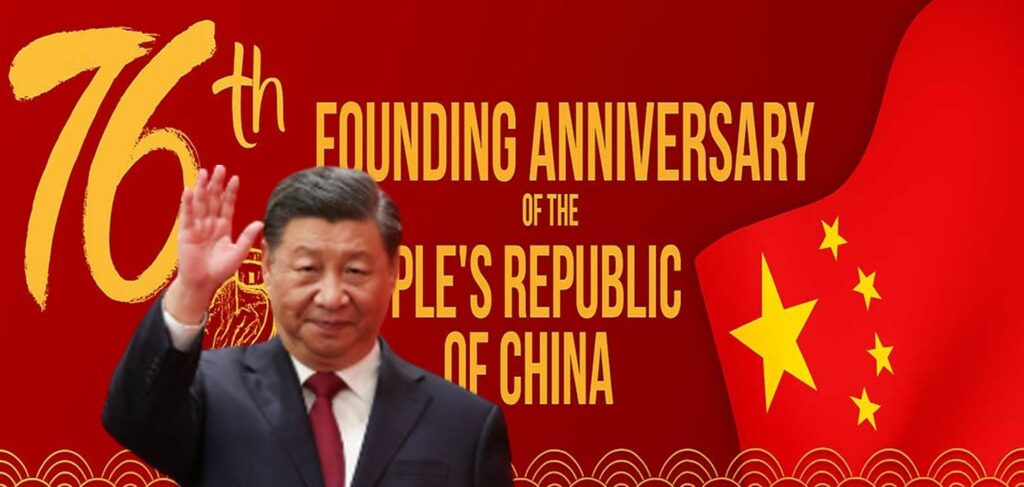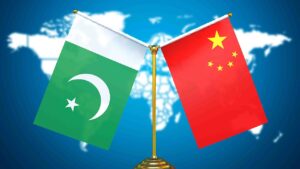China at 76: National Day and the Story of an Unstoppable Rise

Every year October 1st paints China in celebration with flags waving, fireworks lighting up the skies, and a proud nation reflecting on its achievements. But this day is not only significant within China. Around the world, observers take a moment to admire the country’s journey; not just for its staggering growth, but for the clarity of vision and leadership that made it possible. At a moment when many countries are grappling with internal divisions and short-term thinking, China stands out for its ability to focus on the long term planning, mobilize national energy, and produce results that change lives. Its consistent rise is the tale of determination and extraordinary leadership. China has transformed from an agricultural economy into the second-largest economy in the world, and by some estimates, the largest, within a matter of decades.
From a country of no or negligible influence, China has become an example others aspire to learn from; a technological leader, a pioneer in renewable energy, and a key player in global affairs. China’s emergence wasn’t a matter of fortune and didn’t come overnight; it was achieved step by step. It is the result of wise governance, bold reforms, and a leadership philosophy based on stability, development, and inclusive growth. To look at modern China is to see the power of unity, like what can happen when millions of individuals work together towards the same goal of building a better future.
Lifting the Nation Together
The struggle out of poverty has been one of the greatest accomplishments of Chinese leadership. Perhaps few tales in recent history can compare with the magnitude of what China has done: it has taken over 800 million individuals out of abject poverty. It is both an economic triumph and a deep humanitarian milestone that has brought hope, dignity, and possibility to tens of millions of families.
This success was not inevitable. It required careful planning, focused rural development policies, and resolve that national prosperity had to reach all corners of the country.
Growth was not something these leaders conceived as to be enjoyed solely by the cities, but rather they invested in the countryside, enhanced infrastructure, and ensured that all had equal access to education and medical care. The ideology was clear that the prosperous China is one where no one is left behind. Simultaneously, through unparalleled investment in infrastructure, China built the foundations of a modern economy. Its high-speed rail network, covering thousands of kilometers, is now a global benchmark. Cities are connected with speed and efficiency, goods move faster, and people’s lives are made easier. Airports, seaports, highways, and smart cities show how seriously China has been committed to building for the future, not just for the present.
A Future Driven by Innovation
China’s leadership also realized that ultimate strength would not come from manufacturing alone. The nation first developed as the “world’s factory,” producing textiles, electronics, and consumer products, but it refused to remain stuck there. Rather, it shifted focus towards innovation, technology, and green energy and quickly redefined itself as a leader in advanced sectors. This shift is perhaps the most remarkable feature of modern China.
Chinese enterprises are currently dominating areas like artificial intelligence, electric vehicles, 5G technology, and renewable energy.
Tesla is no longer the leader in electric vehicles because BYD now wears that crown. Similarly, Huawei has become a global tech giant, and numerous startups are accelerating progress in robotics, biotechnology, and digital finance. These are not mere casual successes; these are the result of a government that had set clear priorities, encouraged research and development, and established an environment where talent could thrive. These achievements are the clear manifestation that China is determined to lead.
China’s leadership also made the bold decision to pursue sustainability as a central pillar of growth. In an era when the world faces climate change, China has positioned itself as a leader in renewable energy and has heavily invested in it. It installs more solar and wind capacity than any other country, dominates battery production, and exports green technologies that are helping the world fight against climate change. This is the crux of leadership: thinking not only about immediate economic growth but about the survival and wellbeing of future generations.
Global Reach, Global Responsibility
Even beyond the borders, China has assumed the leadership position as well. The Belt and Road Initiative has built roads, railways, ports, and power plants in Asia, Africa, and Europe. These projects are not just about trade. They symbolize a vision of shared development. Many developing nations that once had poor infrastructure now have the means to connect with the global economy, thanks to Chinese investment and expertise.
Critics often portray these efforts as geopolitical maneuvering, but for many partner nations, the results are undeniable, such as improved connectivity, robust economies, and opportunities for people who were once cut off from growth. It shows that what started as national leadership has grown into a global force, with China shaping progress that could echo for generations.
Meanwhile, China has also taken a more proactive role in international governance, playing a role in institutions and initiatives that govern trade, security, and climate cooperation. It has shown that leadership is not solely about dominance but about responsibility, stability, and a desire to contribute to solving global problems.
A Vision That Inspires
What is so remarkable about China’s rise is not necessarily the speed or magnitude, but that it has been charted by vision and persistence. While other nations are frequently sidetracked by short-term politics, China has kept its focus on the long term. Its leadership has exhibited stability, flexibility, and pragmatism—traits that have enabled it to ride through global financial crises, trade wars, and even a pandemic, yet still continue to expand.
China’s success shows what is possible when a nation aligns leadership, policy, and people toward common goals. It shows that progress is defined by unity, planning, and consistency and not just wealth. As National Day is celebrated, this is the lesson the world can take from China: when leaders dare to think decades ahead, when they prioritize the people, and when they act with determination, extraordinary things become possible.
To me, China’s story is not simply about economic figures, it is about inspiration. It proves how a nation can emerge without sacrificing its identity, how it can modernize while preserving its traditions, and how it can become part of global progress without compromising its own foundations. This is the testament of strong leadership, and it is why China today stands tall as one of the most influential powers on planet.


